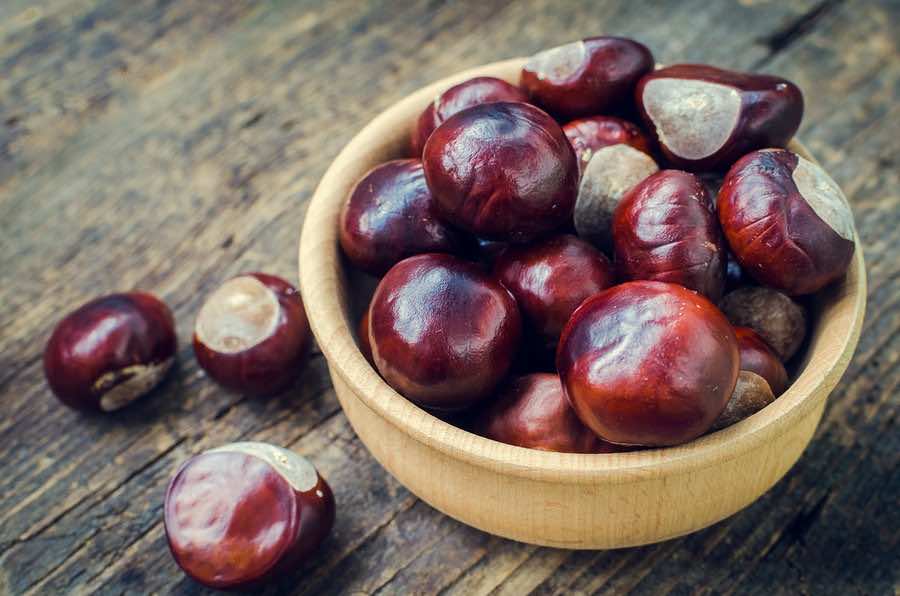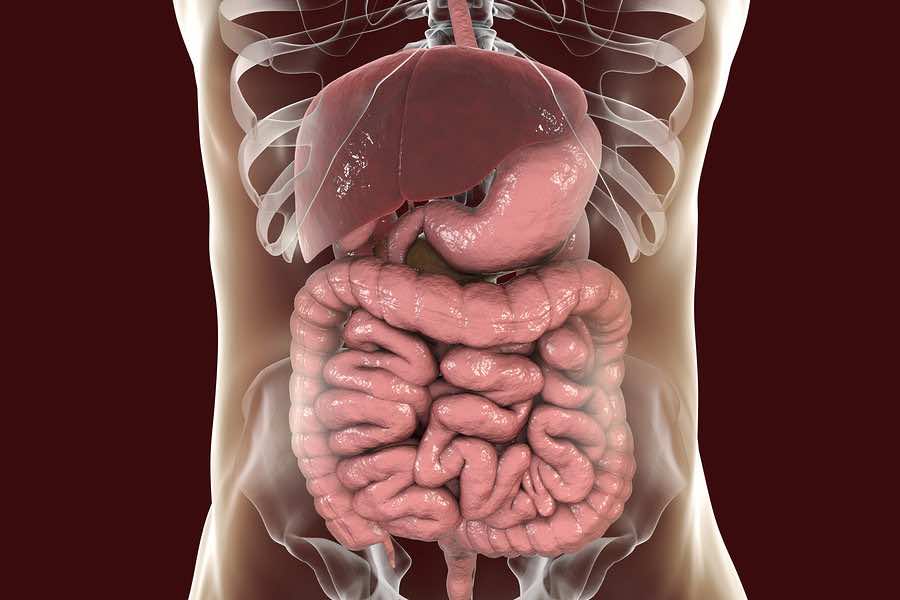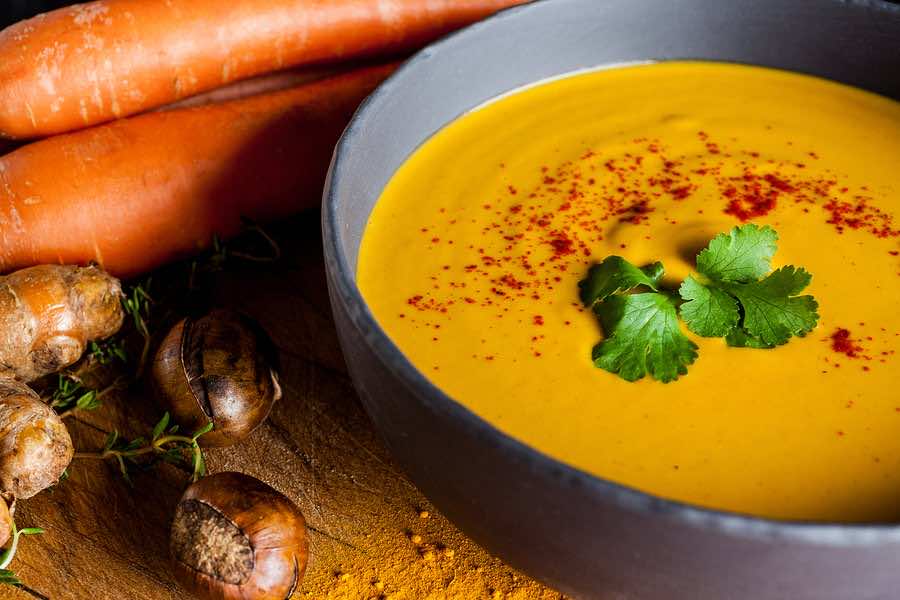
The Many Benefits Of Chestnuts (PLUS How To Roast And Use)


The Many Benefits Of Chestnuts (PLUS How To Roast And Use)
If you’ve ever eaten chestnuts before, you may recognize this as a tasty edible nut, but for most people who haven’t, it’s simply a saying they’ve heard about.
But chestnuts are far more than that. They’re one of the healthiest nuts that you should be enjoying – not just during the holidays but at other times during the year.
They give off a slightly sweet taste and pack many crunches, satisfying many of your food cravings.
Let’s take a closer look at the benefits chestnuts offer and then go over how to roast them and finish by providing you with a few delicious recipes you can use to prepare them.
Here’s what you should know.
What Are Chestnuts?
Before we address benefits, let’s first consider what these are, to begin with. Chestnuts, which go by the scientific name Castanea, come from trees or shrubs below the oak and beech tree family.
What’s unique about this nut is that while it is a nut, it’s also considered a fruit. This is because the definition of a fruit is the product of a flowering plant. This holds for the chestnut so that it can be classified as either.
There are four different types of chestnuts that you can purchase. These include:
American chestnut
Sweet chestnut
Chinese chestnut (not the same as a water chestnut, which is not a nut at all)
Japanese chestnut
When looking at the nutritional profile of chestnuts, they are quite different from many other nuts. Most nuts are low in carbs and high in fat, but chestnuts are the opposite.
This nut is starchy, so it ranks high on the carbohydrate side of things and low in the fat department. They don’t contain much protein, so they are a primary carb-dense food. For those on the paleo diet plan, for instance, this is good news as chestnuts are a permissible food and are another good source of carbohydrates to eat. Many active people following the paleo diet plan struggle to find good carbohydrate sources for their menu, so this is another one they can add to their list.
If you consume ten chestnuts, you’ll take in about 206 calories, 44.5 grams of carbohydrates, 2.7 grams of protein, 1.8 grams of fat, and 4.3 grams of fiber. On top of that, they’ll also supply you with a good dose of manganese, vitamin C, vitamin B6, copper, folate, thiamine, potassium, riboflavin, phosphorus, vitamin K, magnesium, niacin, pantothenic acid, iron, and zinc.
So now that you know a little more about the chestnut, let’s look at its many benefits.
Enhanced Digestion
Everyone could use a little digestive support now and then. At least, that’s what most of you will be thinking. Digestion problems are all too common, and there can be many reasons behind this. Things like too much psychological stress, too much salt in the diet, few probiotics, and insufficient sleep can all hurt our digestive systems.
The good news is that water chestnuts may help reverse this trend. They help you improve your digestive processes in two different ways.
First, they are high in dietary fiber. Dietary fiber, often referred to as ‘Mother Nature’s broom,’ is a way to help clean out your digestive system and ensure that everything works as it should.
Adding more dietary fiber to your diet plan can help push food through your system, leaving you feeling far better than before. It also helps to relieve constipation and promote more regular bowel movements.
Eating enough dietary fiber in your regular meal plan is a great way to prevent constipation from occurring in the first place.
The second way you’ll benefit from including water chestnuts in your day as far as digestion goes is that they can help protect the probiotics already in your digestive tract (1). So while they may not provide the probiotics themselves, if you are eating probiotic-rich food or taking a probiotic product, then you will ensure that those probiotics you are consuming are well protected and able to do their job as they should.
Essentially, they provide you with extra assurance and support.
Strong Source Of Antioxidants
The next great benefit is that they are also a terrific source of antioxidants. We need to eat more antioxidants in our everyday diet because doing so can help prevent aging.
When you encounter free radicals from the environment, the foods you eat, or other sources, such as stress, your body suffers oxidative damage. Slowly this damage begins to wear on you, like rust on a car. Unless it’s taken care of, it will eventually cause larger problems.
Antioxidants protect against this. They neutralize the free radicals, so they cannot harm; thus, the aging process does not occur as quickly.
Many people think that fruits and vegetables are the primary sources of antioxidants in the diet, and while they are a terrific source, they aren’t the only sources.
Chestnuts can be an excellent source, too, and help provide the varied nutrition you need to achieve optimal health standing.
Research published in the Bioscience, Biotechnology, and Biochemistry journal (2) has noted that chestnuts appear to be especially powerful at helping combat skin cancer in particular, so if you are someone out in the natural daylight quite often, you’ll want to make sure that you have chestnuts in your meal plan.
Heart Health Benefits
Today, poor heart health is one of the leading causes of death, with this issue striking someone in the US about every 43 seconds, according to the American Heart Association (3). It only makes sense then that you would want to do everything you can to prevent heart disease from affecting you, and the great news is this is a very controllable condition.
While genetics will increase your risk factor to a degree, nutrition and lifestyle choices will have a larger impact.
The antioxidants found in chestnuts also appear to help protect the heart as they can help reduce the overall levels of inflammation in the body. They also contain potassium, which helps to regulate heartbeat and rhythm, so getting enough of this into your diet will also be very important for optimal health.
Potassium and sodium intake directly dictate how blood pressure responds in the body, and high blood pressure is one of the leading causes of heart attacks and strokes.
It may Help Ward Off Osteoporosis And Bone Breaks.
As you get older, you’ll notice yourself becoming more concerned about joint health. While in your 20sn and 30s, you may not have thought much of it as you felt fine and went about your activities with ease, as your 40’s come on and your 50s, you may notice achy joints making an appearance. This can put a serious dent in your ability to partake in the physical activities you enjoy and may even put you at risk of increased bone health issues.
Many people in their older years grow concerned about bone breaks or stress fractures, so doing everything possible to keep your bones in top shape is a must.
The focus tends to be on achieving optimal calcium intake daily to boost bone health, but two additional nutrients are also just as critical: vitamin D and magnesium. Both are required for the calcium to be used properly to form the bone matrix, so if you are deficient in either of these, you aren’t doing yourself much good.
Nearly half of all the magnesium in the human body is stored in the bones, so this should give you a pretty good idea of just how important magnesium is. When vitamin D and magnesium work together, they may help reduce the risk of bone loss, particularly in women going through menopausal years. During this time, they are at an increased risk of bone density decreases thanks to the shifting hormones that are taking place (4).
Chestnuts are one of the best sources of magnesium that you can consume. However, there are other good sources available. These include whole wheat flour, spinach, dark leafy greens, quinoa, almonds, cashews, black beans, and peanuts. Taking in a combination of these along with your chestnuts will help give you the best protection for your bones.
Cognitive Support
Want to keep your mind sharp? Then you might consider serving chestnuts as a snack during the day. Chestnuts can promote better brain health because they are a rich source of B vitamins, including thiamine, vitamin B6, riboflavin, and folate. When you fall short in any of these B vitamins, you may notice that you are experiencing problems with your cognition, including your reaction time and memory.
Furthermore, folate is important for pregnant women and young children to foster proper brain and nervous system development. This makes chestnuts a fantastic food for any woman who is expecting.
If you want to enhance your cognitive health even further, try combining chestnuts with a good Probiotic supplement for enhanced brain health.
So as you can see, there are some terrific benefits to chestnuts you don’t want to overlook. They are a very healthy addition to your diet plan.
Roasting Chestnuts
Now let’s get to the classic…roasting chestnuts on an open fire. While this may not be your chosen method, roasting chestnuts is not all that challenging.
You’ll want to use a small knife and cut an X into the chestnut. This helps to let steam escape from the chestnut as you roast them. Next, place them on a baking sheet in a single layer and preheat the oven to 425 degrees F. Once the oven is preheated, bake for about 25-30 minutes or until they are golden brown. Let cool and then peel and serve.
Chestnut Recipes
To help get you started adding these to your diet, here are a couple of chestnut recipes you’ll want to try.
Roasted Chicken With Chestnuts
This roasted chicken recipe is great for getting quality protein in a while, adding more fiber to your diet. Serve it alongside some sweet potatoes or any other carb source you desire.
Whole roasting chicken (approximately 1 kg)
Two large carrots
Five bay leaves
3 tbsp. white vinegar
salt and pepper to taste
Two onions
2 cups red wine
300 grams chestnuts
Three sprigs rosemary
1 tbsp. honey
Four cloves garlic
5 tbsp. olive oil
Peel the onions and carrots and then cut them into large pieces. Place the chicken in a large bowl and then surround it with the vegetables. Place the bay leaves around it.
Combine the red wine and the white vinegar. Pour over the dish and then place in the fridge for two days to marinate, turning the meat occasionally.
Slice the chestnuts slightly to let steam escape, and then put them in a pot of boiling salted water and cook for about 10 minutes. Drain and then rinse in cold water. Remove the shells. Preheat the oven to 150 degrees.
Slice the garlic and heat some olive oil in a skillet over medium heat. Lightly brown the chicken and then place it back into the roasting tin. Add the garlic and rosemary around the meat and then cook for about 90 minutes. After cooking, remove from the oven, cover with aluminum foil, and let stand for about 15 minutes. Salt and pepper as needed before serving.
Chestnuts And Brussels Sprouts
You might look at Brussels sprouts differently after trying this unique recipe. The combination of Brussels sprouts plus sweet chestnuts gives the perfect marriage of flavors you’re sure to enjoy.
3 cups Brussels sprouts
½ cup low sodium vegetable broth
3 tbsp. grass-fed butter
Salt and pepper to taste
400 grams chestnuts, pre-cooked
¼ cup white wine
1 tbsp. white balsamic cream
Wash and slice the Brussels sprouts in half lengthwise. Saute in 1 tbsp. Of butter for a few minutes, and then add the vegetable broth and wine. Put a lid on the pan and cook over medium heat for about 15 minutes.
Add the chestnuts and heat for about two minutes. Stir in the butter, salt, and pepper, and then add in the balsamic cream to taste.
Buttery Roasted Chestnuts
If you want a classic taste, you can’t go wrong with this recipe. This buttery roasted chestnut dish is sure to please even the pickiest of eaters with its simplicity and tantalizing taste.
2 lbs. unshelled chestnuts
2-3 sprigs of rosemary
½ cup grass-fed unsalted butter, melted
2 tsp. salt
pepper to taste
nutmeg to taste
cinnamon to taste
Heat the oven to 425 degrees. Next, place a sheet of tin foil on a baking sheet. Mark an X on the chestnuts with a knife, allowing steam to escape. Next, soak these in a bowl of hot water for about one minute. Drain and pad dry.
Combine rosemary, butter (melted), salt, nutmeg, and cinnamon. Season with pepper as desired. Mix this with the chestnuts and toss to coat.
Place chestnuts on the foil-lined pan and gather up the foil around the edge, leaving room for steam to escape still. Roast for 30-45 minutes or until soft and tender. Serve immediately.
Coffee Roasted Chestnuts
Looking for something unique and different? Try this recipe! It will awaken your taste buds and give you something completely new.
2 tbsp. grass-fed butter
One lb. fresh chestnuts
3 cups dark roast whole coffee beans
Wash and drain the chestnuts. Pat dry. Melt butter in a large Dutch oven. Add the chestnuts and stir, cooking for about one minute. Next, add the coffee beans and stir for approximately 2 minutes while cooking. Cover and allow to roast on the stove over low heat for five minutes. Stir, and then repeat until 20 minutes is up. Transfer to a bowl and then serve while warm.
References:
1. Blaiotta, Giuseppe, et al. “Effect of chestnut extract and fiber on the viability of potentially probiotic Lactobacillus strains under gastrointestinal tract conditions.” Food microbiology 36.2 (2013): 161-169.
2. Sapkota, Kumar, et al. “Antioxidant and antimelanogenic properties of chestnut flower extract.” Bioscience, biotechnology, and biochemistry 74.8 (2010): 1527-1533.
3. https://www.heart.org/idc/groups/ahamah-public/@wcm/@sop/@smd/documents/downloadable/ucm_470704.pdf
4. O’Neal, Stefanie L., et al. “Manganese accumulation in bone following chronic exposure in rats: Steady-state concentration and half-life in bone.” Toxicology Letters 229.1 (2014): 93-100.
3 Comments
Leave a Comment
You must be logged in to post a comment.






Everything iss very open wirh a very clear description of the issues.
It was truly informative. Your website is very helpful.
Manyy thanks for sharing!
You are welcome! Glad we could help.
This excellent website definitely has all the info I wanted about this subject and didn’t know who to ask.